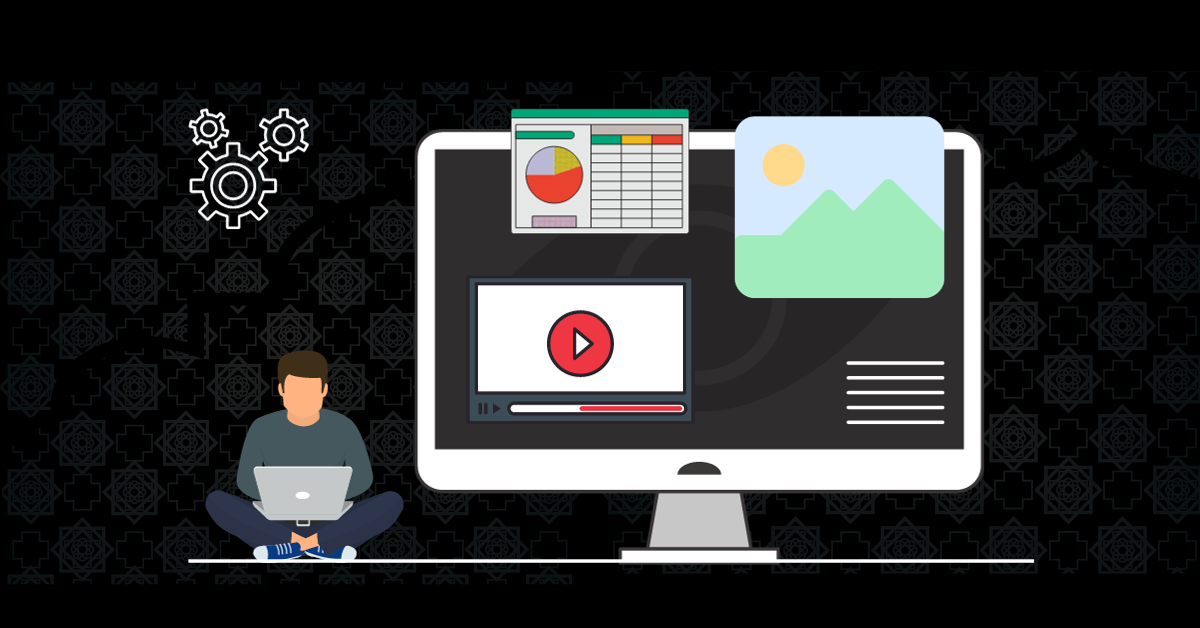This article contains affiliate links – but that doesn’t mean this piece is an ad.
All content is our honest take on the service/product and incorporates our
real thoughts and experience using it.
Online visibility of your Software as a Service (SaaS) product is paramount for its success. One of the most critical aspects that can significantly enhance your product’s online presence is Technical SEO.
But what is Technical SEO? It’s one form of Search Engine Optimization, which is a set of strategies that tries to increase the ranking of a website and individual pieces of content.
Why should you care? Why read this post? Because two-thirds of all clicks from a Google search go to the top 5 results on the first page.
Technical SEO is pretty much what it says in the name. It focuses on improving a website’s technical aspects. These aspects include performance, readability, and compatibility with search engine guidelines.
Let’s get into the nitty gritty of technical SEO for SaaS, and how you can optimize it to boost your product’s online presence.
Table of Contents
The Basics of SEO
Search Engine Optimization, often shortened to SEO due to it being too much of a mouthful to say a million times in a workday, is the process of optimizing a website’s content to rank higher on search engine results pages (SERPs).
In simpler terms, it means making your website easier to find when people search for related content online. This may include optimizing keywords. It could be improving website design and structure. Creating quality content that search engines can easily crawl and index is also a factor.
You need SEO if you want to increase online visibility and attract more traffic. People on your website turn into sales or conversions. And as a business owner, you should want all those things.
SEO has become indispensable for digital marketing success. But it’s not new. It’s been an important aspect for decades now.
However, it has become harder to rank content as savvy marketers have become experts at working the system. It’s now more vital than ever to do it and do it better than the competition.

Why is Technical SEO Important?
Having a sound technical SEO foundation is crucial for any website to achieve high rankings on search engine result pages. Without proper optimization, even the most well-designed and informative websites can struggle to rank well and attract traffic.
Technical SEO makes it easy for Google’s bots to understand your website’s content. The better they understand, the higher your potential rankings.
The Importance of Technical SEO for SaaS Products
In the world of SaaS (Software as a Service), where more and more products are being offered online, technical SEO becomes even more vital for success.
With many competitors vying for top positions on search engine results pages, solid technical SEO can significantly enhance your product’s online presence.
As a startup, you might have already noticed that ranking for your favorite keywords is a challenge. Don’t let this discourage you. It doesn’t mean other services are better.
One major component of SEO is the age of the domain name. Your competition may rank better than you because they’ve simply been in the game longer.
You can certainly play the waiting game and watch as your SEO slowly improves over the course of years. But do you really have that long to wait?
Technical SEO is something you can start on now and work continuously on to catch up, and eventually surpass, competing companies.
How Does Technical SEO Work?
These technical elements include:
- website speed
- mobile-friendliness
- site structure
- URL structure
- Canonicalization
- indexing crawling
- and more
Technical SEO aims to make your website more accessible to search engine bots. If Google gets you, they rank you. That’s how it breaks down.
It’s also one of the only aspects that you have complete control over.
We don’t have control over Google and how their bots crawl websites. We don’t control their algorithm. Our control over the links coming into the site has a limit.
But the technical side? It’s all you, baby.
Technical SEO for SaaS – Diving Deeper
Now that we have a basic understanding of SEO and technical SEO let’s dive deeper into the specifics.
Website Performance
One crucial aspect of Technical SEO is website performance. Search engines love websites with fast loading times, as this ensures a better user experience.
Why? Google is a business. And they want people to continue to use their services.
Why? They charge people money for ads on the SERPs. It’s practically pure profit for them.
To keep this money rolling in, they have to provide exemplary service. And no one wants to visit a slow website in 2024.
Slow loading speeds can also lead to higher bounce rates, which can lower rankings on the results page.
To improve website performance, you can use online tools like Google’s PageSpeed Insights to identify areas that need optimization and make the necessary improvements.
Mobile-Friendliness
With consumers spending more time than ever on their phones, search engines have also started considering a website’s mobile-friendliness as a ranking factor.
If your website is not optimized for mobile, it may not rank well on search engine results pages. To ensure your website is mobile-friendly, use Google’s Mobile-Friendly Test tool to check for any issues and make the necessary changes.
Site Structure and URL Structure
A well-organized site and URL structure can also greatly impact your SEO. Search engines prefer websites with clear and logical structures, making it easier for them to crawl and index content. You’ll need a clear hierarchy of pages, using descriptive URLs, and avoiding duplicate content.
It should look something like this:

Canonicalization
Canonicalization refers to choosing the best URL when many versions of the same page are available. Search engines may see each version as unique content without proper canonicalization. This results in duplicate content issues.
This can negatively affect your SEO. To avoid this, set a canonical URL for each page and use redirects if necessary.
Indexing and Crawling
Google calls the process of adding web pages to its index “indexing”. While the discovery of new or updated web content is “crawling.” We’ve already covered indexing.
You can use tools like Google Search Console to check for any crawling or indexing issues and immediately address them.
11 Practical Steps to Improve Technical SEO
This stuff is crucial for the success of any website, but it can be overwhelming for those who are new to it. By taking small practical steps to improve technical SEO, website owners can make their sites easier to navigate.
1. Optimize Speed – Compress Image Sizes
One way to improve website speed is by compressing image sizes.
Bulky images can significantly bog down page loading times. Slower speeds affect user experience and lower rankings. Use tools like Adobe Photoshop or online compression tools like TinyPNG or Website Planet to optimize your images without compromising quality.
2. Use Structured Data
Structured data refers to a specific format for providing extra information about a webpage’s content to search engines.
It can help search engines understand your website better and display more relevant information on the search engine results page. You can add structured data to your website using Google’s Structured Data Markup Helper tool.
3. Create an XML Sitemap
An XML sitemap is a file that lists all the pages on your site, making it easy for search engines to crawl them. Having an XML sitemap makes search engines discover and index all your website’s pages.
Use a tool like XML Sitemap Generator to create an XML sitemap for your website.
4. Use Robots.txt
Robots.txt is a text file that tells search engine bots which pages or sections of your website to crawl and index.
By properly utilizing this file, you can control what content is accessible to search engines, avoid duplicate content issues, and improve your website’s crawling and indexing efficiency.
You can use Google’s Robots.txt Tester tool to check for any errors in your robots.txt file.
5. SaaS Website Audit
As with any aspect of SEO, it’s crucial to conduct a regular SaaS website audit.
This will help you identify any issues or potential areas for improvement and immediately address them. You can use tools like Screaming Frog or LowFruits to conduct technical audits of your website.
You might also want to read our recent post on the foundation of performing a SaaS content audit.
6. Don’t Sleep on Schema Markup
This is a type of structured data that helps search engine bots better understand your website’s content.
By using it, you can provide more context about your content to search engines. This improves your chances of ranking for relevant keywords and featured snippets.
You can use tools like Google’s Structured Data Testing Tool to check if your website has proper schema markup.
7. Keyword Research and Optimization
Keyword research and optimization are essential for all aspects of SEO, including technical SEO.
Knowing the keywords your audience is typing into Google allows you to optimize your website’s content, URLs, and meta tags to improve its relevancy and visibility on search engines.
8. SaaS Content Optimization
Content is king in the world of SEO, and technical SEO is no exception.
Creating valuable informative content and blending it with SaaS content optimization can improve your website’s chances of ranking well. Regularly updating and improving your content can help attract more traffic.
But who has time for all that? Marketing agencies. There are several out there that specialize in SEO content writing for SaaS businesses. Use them.
9. Link Building
Link building is a crucial aspect of SEO, and it can also have an impact on technical SEO. By obtaining high-quality backlinks from reputable websites, you can improve your website’s domain authority and credibility. This increases the chances of ranking higher on search engines. Links = SEO currency.
But as far as what you can control, don’t sleep on internal links. These are links that go from one piece of content to another. You can use this to increase the amount of time people stay on your site, which is a ranking factor.
More importantly, you can use these internal links to push people down your sales funnel. Here’s an example:
- A piece of content that’s at the top of the funnel is doing really well.
- You add CTAs and internal links that push your target audience to the next step.
- Repeat as necessary.
- Finally, they end up with content that entices them to sell. If you’ve done your research, you know anyone who makes it this far is looking for a reason to pull the trigger. Give it to them.
10. Improve Security
Search engines prioritize websites with SSL certificates, as they provide a secure and encrypted connection for users. Having a secure website can also improve user experience and build trust with potential customers.
In 2024, there is no reason not to have an SSL. Most hosting services now offer them for free as part of your package. This is not somewhere you should skimp.
Additionally, keep your website, themes, and plugins, if you’re using them, updated. Check on them at least once per week. These are the easiest ways to have a compromised website.
11. Rich Snippets
Rich snippets are another type of structured data that provides extra information about your content on the search engine results page. You can increase the likelihood of attracting clicks and standing out among other results by utilizing rich snippets.
Products to Help Improve Technical SEO
Fortunately, several tools and products are available that can help improve technical SEO for SaaS products. These include:
- Google Search Console – a free tool that helps website owners track and maintain their website’s presence in Google search results.
- Ahrefs – an all-in-one SEO tool that provides keyword research, backlink analysis, and technical SEO audit features.
- LowFruits – a comprehensive SEO tool offering SERP analysis, keyword research, clustering, and more.
- Moz Pro – an all-in-one SEO tool that provides keyword research, site audits, and backlink analysis.
- Screaming Frog – a website crawling tool that can help identify technical SEO issues on your website.
And, don’t forget to use the insights found using these tools to improve your technical SEO to update your SaaS marketing dashboard.
Embracing Technical SEO for Better Visibility
Mastering technical SEO for SaaS is no longer optional in the rapidly evolving digital landscape. It’s a necessity for companies looking to boost their online visibility.
With a solid understanding of the key elements we mentioned in this post, you can ensure your website is both user-friendly and search engine-friendly.
Regular audits and SaaS content optimization can further enhance your SEO prowess, making them some of the best practices for SaaS websites.
Embrace the power of technical SEO and propel your SaaS product to new heights of online success. Start implementing these strategies and watch your website’s visibility soar.





Thanks for sharing. I read many of your blog posts, cool, your blog is very good.
Happy to hear you find our articles useful!
Your article helped me a lot, is there any more related content? Thanks!
Happy to hear this article was helpful. Yo umay also want to check out our articles on on-page SEO and off-page SEO.